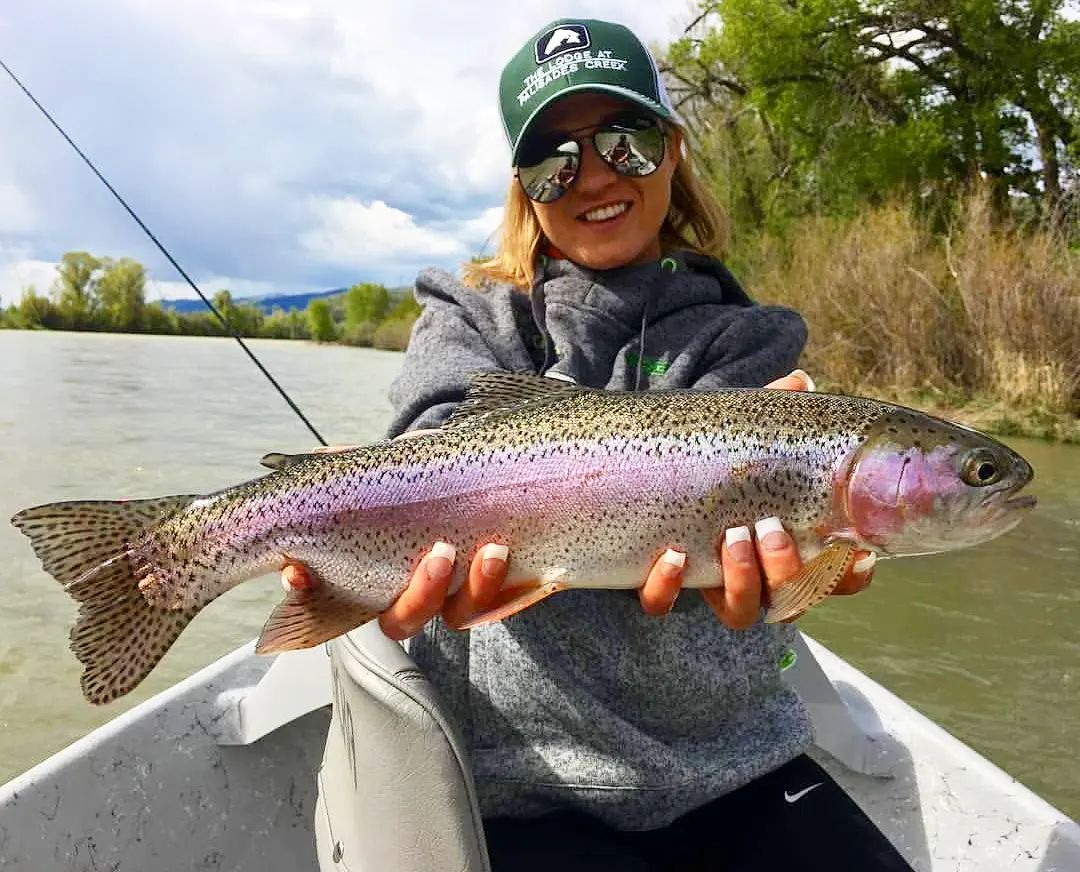The Magic of May
Previous to 2004 the South Fork of the Snake was only open to fishing from Memorial Day Weekend through the end of November. In 2004 the Idaho Fish and Game opened the South Fork of the Snake to year-round fishing, partly to protect the native Cutthroat Trout by encouraging anglers to catch and harvest invasive Rainbow Trout that are more active in the wintertime.
Traditionally many anglers here in South East Idaho still fish the South Fork during the Summer and Fall and head to other area waters like the Henry’s Fork or Silver Creek for Spring fishing. For many years that included me. I would chase Salmon Flies on the Henry’s Fork (like everyone else), fish for Carp on Blackfoot Reservoir, or just bide my time for the hatches on the South Fork to start.
It wasn’t until clients started booking trips in May that I really started taking the Spring fishing seriously and what I found was the Magic of May. As you may have guessed from the above the South Fork is far less crowded in May than in the summer months. Depending on the section you chose to fish you probably won’t have it to yourself but there will only be a few boats at each launch compared to dozens and dozens that you’ll see during the peak season.
The other thing you’ll find is even though the water flows may be higher and the water is certainly colder the fish are still there and they want to eat. Here are the tactics and flies I’ve found most effective. Focus your attention on slower water. If you’ve fished the South Fork in the summer you might want to “pound the banks” but in many cases, in May the water on those banks might be moving too fast to fish effectively. I’m not saying the fish aren’t down there somewhere but I’ve found that by focusing my efforts on the slow water you’ll find more fish.
Look for side channels, slow-moving grassy banks, riffles, back eddies, and even “frog water”, water that isn’t moving at all.
For flies, you’re best to focus on nymphs and streamers but we’ll talk about dry flies in just a second. A variety of nymphs will work in May. The big ugly stuff like San Juan Worms and stonefly nymphs work well. I tie a big rubber-legged stonefly nymph on a size 4 streamer hook that one of my clients named the “Spark Plug” because it landed like one with all the lead I wrap into it. If you have a big san juan worm in your box that is so big and gaudy that it makes you feel bad even tying it on, that’s the one you want to put on. The same applies to streamers with the added caveat that if you’re not getting some chases, switch colors. If you start with yellow and nobody is following your fly, switch to black, then white, then purple, then olive/white, until you find a streamer they will chase. Egg patterns can also be effective as the Rainbows spawn in the Spring and prefer to spawn in the river as opposed to swimming up tributary streams.
May isn’t all about the big stuff, good hatches of midges and blue-winged olives can be found as well as the occasional Skwala stonefly. If you’re seeing midges and blue-winged olives on the surface my biggest tip would be to immediately put a nymph or soft hackle imitation of these bugs on your nymph rig and find some slow water; riffle or foam line. If the bugs are on top it’s a guarantee that the fish are eating them somewhere in their lifecycle and if you’re lucky you might even find some fish feeding on top.
A few other things to consider when fishing the South Fork of the Snake River in May. The weather can change dramatically. It’s not uncommon to have snow, wind, and rain one day and the next day it could be 60 or even 70 degrees and sunny. Pack your layers! Several lodges and outfitters in the area offer pre-season rates for guided fishing and/or lodging stays. As an added benefit the best guides are often available this time of year.
Getting to the South Fork of the Snake is easy. You can fly into Idaho Falls or Jackson Hole, you can even fly into Salt Lake City and rent a car and you can be to the lower reaches of the South Fork in 3 hours.

